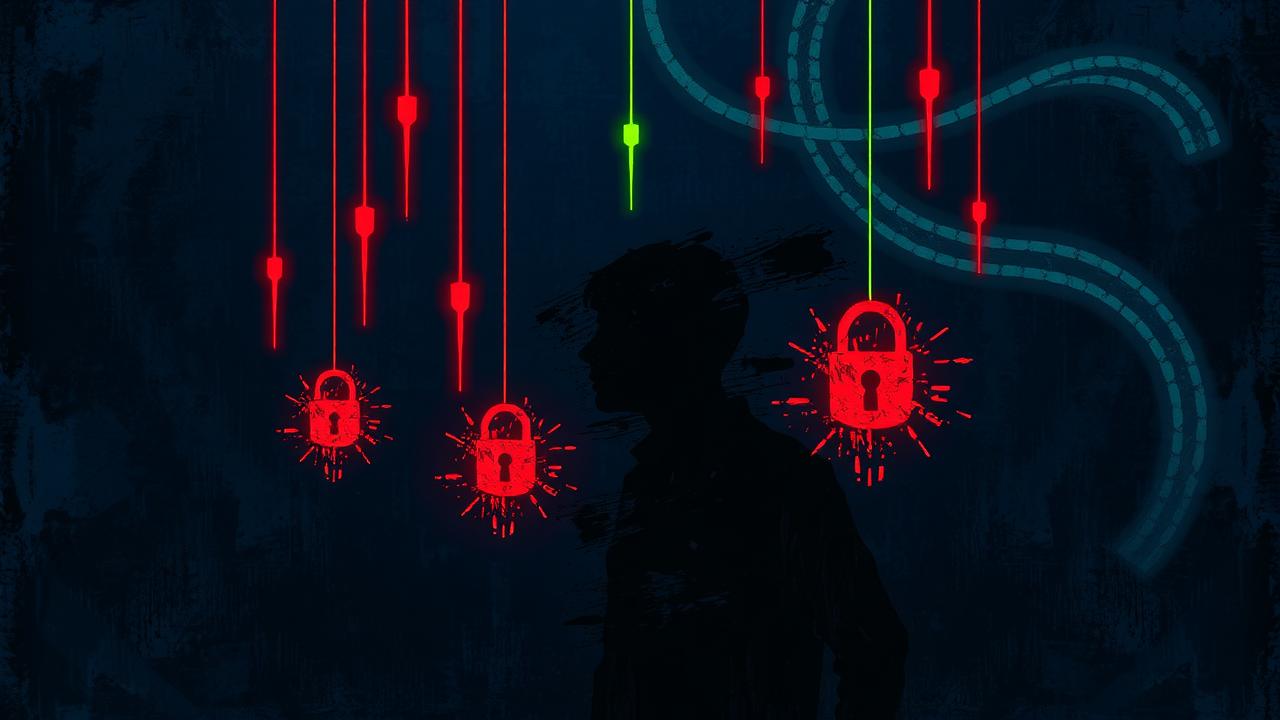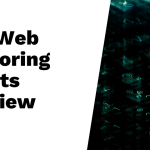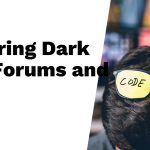Dark web exposure monitoring is a service that keeps an eye on hidden corners of the internet for your personal information, including Social Security numbers and email addresses. It acts like a safety net by alerting you if your data appears, which is crucial for preventing identity theft and minimizing financial loss. Many personal details end up on the dark web due to data breaches, phishing attacks, or even malware. When this happens, it can lead to serious consequences like fraud or privacy violations. Utilizing these monitoring services can offer quick alerts and comprehensive protections to help you stay informed about potential risks while managing your digital identity effectively.
Table of Contents
- What is Dark Web Monitoring?
- How Does Dark Web Monitoring Work?
- Ways Personal Information Ends Up on the Dark Web
- Common Threats Linked to the Dark Web
- Key Benefits of Dark Web Monitoring Services
- Recommended Practices for Online Safety
- Integrating Dark Web Monitoring into Cybersecurity
- Response Steps if Your Data is Compromised
- Frequently Asked Questions
1. What is Dark Web Monitoring?

Dark Web Monitoring is a process that involves tracking and scanning the dark web for any unauthorized use of personal information. This includes sensitive data like credit card numbers, medical records, and login credentials. Many organizations offer this service as part of their cybersecurity solutions. Using advanced automated tools, these services search hidden forums and websites that are not indexed by traditional search engines, making them more challenging to access for the average user. When a user’s information is detected on the dark web, they receive alerts that allow them to take quick action to protect themselves. This proactive approach can help uncover information that might be used for identity theft or fraud. Individuals can subscribe to these monitoring services to keep their sensitive information secure. Some providers even offer additional features such as identity theft insurance for extra protection. In today’s online landscape, Dark Web Monitoring plays a crucial role in safeguarding digital identities.
2. How Does Dark Web Monitoring Work?
Dark Web Monitoring utilizes specialized software that scans hidden sections of the internet for personal information that may have been exposed. This process involves checking against extensive databases of known data breaches and leaked information, allowing services to identify potential threats. When a match is found, users receive immediate alerts, detailing what specific information has been compromised. Some monitoring services enhance this process by employing human analysts who review the findings and provide additional insights.
The technology behind Dark Web Monitoring is continually updated, ensuring that databases reflect the latest breaches and lists of stolen information. To set up monitoring, users typically need to provide personal details, allowing the service to track relevant data effectively. The technology can identify data in various formats, including plain text and hashed formats, making it robust in its search capabilities. Many services also offer user-friendly dashboards, where individuals can easily check the status of their monitoring.
In addition to alerts about compromised information, Dark Web Monitoring can notify users of changes in their personal information, such as new accounts opened in their name. Regular updates from monitoring services keep users informed about the evolving landscape of dark web threats, ensuring they can take timely actions to protect their identities.
3. Ways Personal Information Ends Up on the Dark Web
Personal information finds its way onto the dark web through several alarming channels. One of the most significant sources is data breaches, where hackers infiltrate companies and steal sensitive information, which is then sold in underground markets. For instance, high-profile breaches like those of Facebook or LinkedIn expose millions of users’ data, making it readily available for criminals.
Phishing attacks also play a crucial role in this process. Cybercriminals craft deceptive emails or messages that trick unsuspecting individuals into providing personal information. Once obtained, this data often ends up on the dark web, where it can be exploited.
Malware is another common method. Harmful software can infect devices, quietly collecting passwords, banking details, and other sensitive information without the user’s knowledge. This data, once gathered, can be sold to the highest bidder on illicit platforms.
Social engineering tactics exploit human psychology, manipulating individuals into revealing confidential information. For example, a scammer might pose as a trusted friend or authority figure to gain access to personal details.
Additionally, publicly available information, such as social media posts, is often combined with other data to create comprehensive profiles. Data aggregators collect this type of information, which can eventually be misused and sold on the dark web.
Insider threats also pose a risk, as employees may leak or sell sensitive data for personal gain. Medical records, particularly those containing sensitive health information, are highly sought after by criminals due to their value.
Even seemingly harmless bits of data can be pieced together to form a complete profile, making it essential to understand these risks. The dark web serves as a marketplace for stolen data, where illicit online marketplaces thrive, specializing in selling personal information to other criminals.
| Source | Description |
|---|---|
| Data Breaches | Sensitive data from companies is often sold or shared on the dark web following breaches (e.g., major incidents involving Facebook, LinkedIn). |
| Phishing Attacks | Cybercriminals trick individuals into providing personal information, which is then sold. |
| Malware | Malicious software can collect sensitive data from users’ devices. |
| Social Engineering | Manipulation techniques used to extract confidential information. |
| Publicly Available Data | Information from social media can be combined with other details to create valuable profiles. |
| Data Aggregators | Collection of information that ends up on the dark web. |
| Illicit Online Marketplaces | Specialized platforms for selling stolen data and personal information to criminals. |
| Insider Threats | Employees leaking or selling data externally. |
| Medical Records | Particularly sensitive health information targeted by hackers. |
| Seemingly Harmless Data | Even innocuous data can be pieced together to build complete profiles. |
4. Common Threats Linked to the Dark Web
The dark web is a breeding ground for various threats that can severely impact individuals and organizations. One of the most alarming risks is identity theft, where stolen personal information is used to impersonate someone for financial gain. This could lead to unauthorized transactions or even the opening of new accounts in a victim’s name, wreaking havoc on their financial stability. Beyond financial implications, privacy violations can result in harassment or blackmail, putting individuals at risk of physical threats.
Moreover, reputational damage is another significant concern; when sensitive information is leaked, it can tarnish both personal and professional lives, often with lasting consequences. Ransomware attacks, which have become more prevalent, frequently stem from data obtained through the dark web. Cybercriminals can exploit stolen credentials to infiltrate corporate networks, leading to broader security breaches that can affect countless individuals.
Additionally, scams and fraudulent schemes are rampant, enticing victims with deceptive offers or services, which can leave them financially devastated. Social engineering attacks, fueled by information gathered from dark web forums, can be particularly effective, manipulating individuals into revealing even more sensitive data. Lastly, the sale of personal data on the dark web can trigger a cascade of criminal activities that extend far beyond identity theft, underscoring the urgency of monitoring one’s digital footprint.
5. Key Benefits of Dark Web Monitoring Services
Dark web monitoring services offer several key benefits that help individuals protect their identities. One of the most significant advantages is real-time alerts, which notify users immediately if their personal information appears on the dark web. This quick response can be crucial in preventing identity theft and financial loss. Additionally, many of these services provide comprehensive protection, including credit monitoring and identity restoration services, ensuring that users have support if their data is compromised.
Users also gain peace of mind knowing that their information is under constant surveillance. With 24/7 monitoring, any breaches can be detected as soon as they happen, allowing for swift action. Some services even offer identity theft insurance, which helps mitigate financial losses associated with identity fraud, providing an extra layer of security.
User-friendly dashboards make it easy for individuals to monitor their exposure and take necessary actions. Regular reports keep users updated on trends in data breaches and dark web activities, ensuring they stay informed. Furthermore, the ability to customize alerts based on specific data points allows for a tailored monitoring experience that fits individual needs. With expert support often available, users can receive guidance on recovery steps if their data is compromised, making dark web monitoring an essential tool for identity protection.
- Real-time alerts keep users informed about their data status and potential threats.
- Comprehensive protection often includes credit monitoring and identity restoration services.
- Peace of mind comes from knowing that there is ongoing surveillance of personal information.
- Some services offer identity theft insurance, which can help mitigate financial losses.
- User-friendly dashboards allow individuals to monitor their exposure and take necessary actions.
- 24/7 monitoring ensures that any breaches are detected as soon as they occur.
- Expert support is often available to guide users through recovery steps if their data is compromised.
- Many services provide educational resources to help users understand dark web threats better.
- Regular reports keep users informed about trends in data breaches and dark web activities.
- The ability to customize alerts based on specific data points allows for tailored monitoring experiences.
6. Recommended Practices for Online Safety
Strong password management is crucial in today’s digital landscape. Use unique and complex passwords for different accounts to minimize the risk of unauthorized access. A password manager can simplify this process by securely storing and generating passwords. Additionally, enabling two-factor authentication (2FA) adds an extra layer of security, making it harder for cybercriminals to compromise your accounts. Regularly monitoring your financial accounts is essential as well; keeping an eye on bank statements and credit reports can help you catch unusual activity early. Staying informed about the latest cybersecurity threats enhances your personal vigilance, allowing you to recognize potential risks. It’s also wise to avoid sharing sensitive information on social media, as this can expose you to social engineering attacks. Regularly updating your security software ensures your devices are protected against the latest threats, while educating yourself and your family about phishing tactics can help everyone avoid falling victim to scams. Lastly, using secure connections, such as VPNs, can protect your data while browsing, and consider periodic checks of your credit report to identify any unauthorized accounts.
7. Integrating Dark Web Monitoring into Cybersecurity
Integrating dark web monitoring into a cybersecurity strategy is essential for both individuals and businesses. By including this component, you gain an early warning system against identity theft and fraud. Regular software updates are crucial, as they patch vulnerabilities that cybercriminals might exploit. User education plays a key role too; understanding phishing tactics can prevent data breaches before they occur. Using secure connections, like VPNs, adds another layer of protection for online activities. It’s also important to have an incident response plan that outlines steps to take if your data is found on the dark web. A multi-layered security approach, including firewalls and antivirus software, enhances the effectiveness of monitoring services. Regular reviews of security protocols ensure that you adapt to new threats as they arise. Collaborating with cybersecurity professionals can optimize your monitoring and response strategies, while investing in employee training can reduce the risk of insider threats. By combining dark web monitoring with traditional security measures, you create a robust defense against potential threats.
8. Response Steps if Your Data is Compromised
If your data is compromised, immediate action is crucial. Start by changing any compromised passwords right away to block unauthorized access. Next, notify your financial institutions to secure your accounts and monitor for any fraudulent activity. It may also be wise to consider freezing your credit, which prevents new accounts from being opened in your name without your consent. Additionally, placing fraud alerts on your credit reports can warn creditors to take extra precautions before issuing new accounts.
Take the time to thoroughly review your account statements and credit reports for any unauthorized transactions. If you suspect identity theft, report it to the Federal Trade Commission (FTC) for guidance on recovery steps. In cases where you face harassment or threats due to data exposure, contacting local law enforcement is important.
After a compromise, monitor your accounts closely for several months to catch any delayed effects that might arise. If your monitoring service offers identity restoration support, consider working with them to help regain control. Finally, stay proactive by continuing to monitor dark web activity and adjusting your security practices as needed.
Frequently Asked Questions
1. What is dark web exposure monitoring?
Dark web exposure monitoring is a service that keeps an eye on the dark web to see if your personal information, like your name or social security number, is being sold or misused.
2. Why should I care about my information on the dark web?
You should care because if your information is found on the dark web, it could lead to identity theft, fraud, or other problems that could affect your finances and reputation.
3. How does dark web monitoring work?
Dark web monitoring works by using special tools that scan hidden parts of the internet to find any mention of your personal details, alerting you if anything suspicious is found.
4. What happens if my information is found on the dark web?
If your information is found on the dark web, you will be notified, and you can take steps to protect yourself, such as changing passwords or contacting credit bureaus to monitor your accounts.
5. Can I prevent my information from being exposed on the dark web?
While you can’t fully prevent your information from being exposed, you can reduce risks by using strong passwords, being cautious online, and regularly checking your financial statements.
TL;DR Dark web monitoring is a service that scans hidden internet areas for personal information and alerts users if their data is found. It helps protect against identity theft and fraud, minimizing potential financial loss by providing real-time alerts and additional support features. Personal information can end up on the dark web through data breaches, phishing, malware, and social engineering. Common threats include identity theft, financial fraud, and reputational damage. Users should adopt strong password practices, enable two-factor authentication, and regularly monitor accounts. Integrating dark web monitoring into broader cybersecurity strategies is essential, and immediate response steps should be taken if data is compromised.





